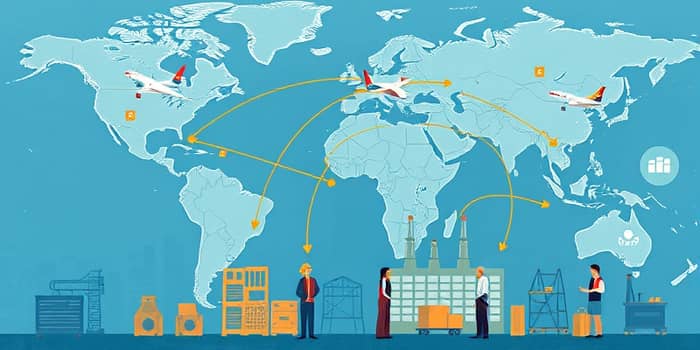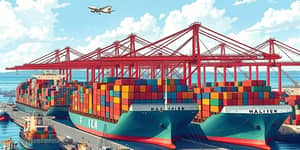
In recent years, global supply chains forged over decades have begun to unravel as enterprises and governments alike embrace reshoring and nearshoring strategies. This seismic shift reflects a growing emphasis on sovereignty, security, and resilience in the face of geopolitical tensions and economic uncertainty. As offshoring declines, economic nationalism is emerging as a potent force reshaping the landscape of international trade and investment.
Industry leaders are reassessing long-held assumptions about cost minimization, weighing the benefits of proximity against traditional labor arbitrage. From corporate boardrooms to legislative chambers, the conversation has pivoted toward strengthening domestic manufacturing and reducing external dependencies.
The global offshoring market, valued at $235 billion in 2025, is projected to expand toward $360 billion by 2033. Yet beneath this growth lies a fundamental transformation: knowledge-intensive services, including AI development, cybersecurity, and advanced analytics, now account for 67% of offshoring arrangements, signaling a move beyond traditional call centers.
India continues to dominate, with 90% of leading global firms leveraging its IT talent. Poland has also emerged as a key contributor, boasting over 400,000 IT professionals and generating 8% of its GDP through offshoring partnerships. Meanwhile, the United States faces an offshorable workforce of roughly 30 million roles, underscoring both the opportunity and the risk inherent in global labor flows.
Several powerful forces are dictating the retreat from traditional offshoring. Foremost among them are national security and supply chain resilience. Governments and corporations are increasingly alarmed by the vulnerabilities exposed through cyber threats, data breaches, and geopolitical conflicts.
In response, many firms are adopting in-house offshoring models—known as captive centers—where they retain direct oversight of offshore teams. This approach, coupled with digital transformation tools and AI integration, enhances control, security, and compliance without sacrificing access to global skill pools.
Governments have deployed an array of measures to coax industries back onshore. In the U.S., the CHIPS and Science Act, the Inflation Reduction Act, and the Build America, Buy America Act offer tax credits, subsidies, and protective tariffs designed to revitalize domestic manufacturing.
These policies reflect a broader turn toward protectionist industrial strategies, aimed at minimizing trade deficits and bolstering national self-reliance. By prioritizing local content requirements and restricting foreign direct investment in sensitive sectors, policymakers seek to safeguard critical infrastructure and intellectual property.
Key industries are at the forefront of this transition. Semiconductors, clean energy technologies, and electric vehicles have become battlegrounds where national security and environmental goals converge. Companies are diversifying supply chains to reduce reliance on any single geography, while emerging hubs in Mexico, the Philippines, and India vie for new investment.
Reshoring and nearshoring now command the strategic agendas of 81% of top executives, while 69% of firms report active relocation efforts away from China, up from 55% in 2022. These numbers underscore the rapid acceleration of regional realignment.
To thrive amid this new paradigm, businesses must cultivate agility, sustainability, and digital prowess. Supply chain agility hinges on real-time visibility and data-driven insights, enabling rapid adjustments to disruptions. Companies are investing in IoT sensors, blockchain for traceability, and AI-powered predictive analytics to stay ahead of risks.
Additionally, maintaining cost-competitiveness requires a nuanced approach: factoring in total landed costs, including tariffs, transportation delays, and compliance expenses, rather than focusing solely on hourly wage differentials. By embracing a balanced scorecard that weighs cost against control and risk mitigation, firms build lasting resilience.
CEOs and COOs are redefining success metrics. Beyond quarterly profit margins, leaders now measure performance in terms of supply chain robustness, regulatory adherence, and contribution to national priorities. This ethos echoes a shift from a purely liberal-trade framework to a measured mercantilist stance, where sovereignty and security are paramount.
Partnerships between governments and private enterprises are proliferating. Collaborative R&D initiatives, workforce upskilling programs, and industrial clusters are emerging as vital components of national strategies. In Europe, similar drives for autonomy in critical technologies are underway, signaling a global realignment of economic power.
While economic nationalism gains momentum, the interdependence of modern economies remains undeniable. The challenge lies in crafting hybrid models that leverage global talent and innovation while fortifying domestic capabilities. Firms that master this dual approach will gain a decisive advantage in an era defined by uncertainty.
Ultimately, the decline of offshoring amid calls for economic nationalism reveals a deeper truth: in a world buffeted by disruption, autonomy and adaptability are not just ambitions—they are imperatives. By investing in resilient supply chains, fostering local ecosystems, and integrating cutting-edge technologies, organizations can chart a course toward sustainable growth and security in the decades to come.
References













